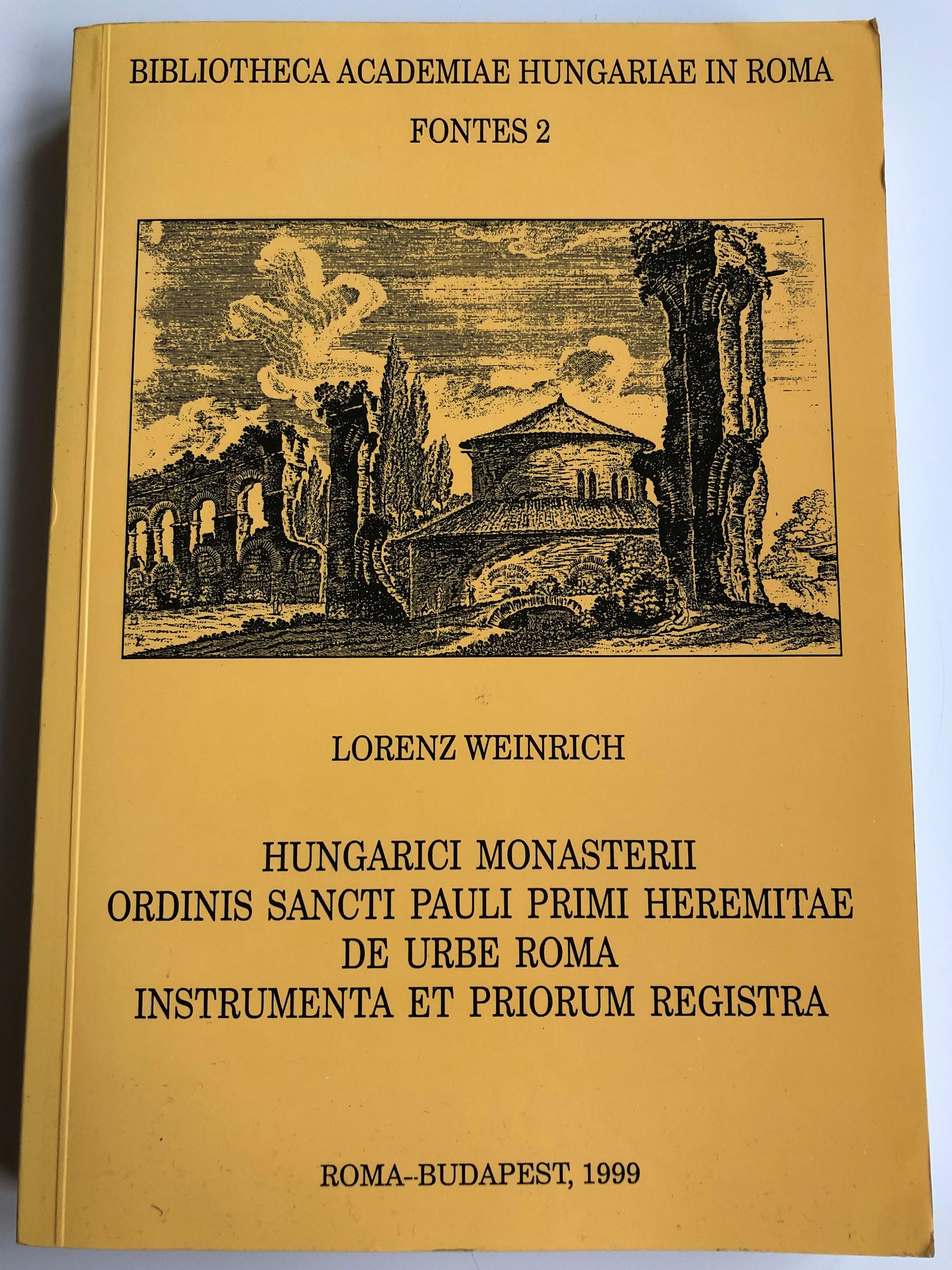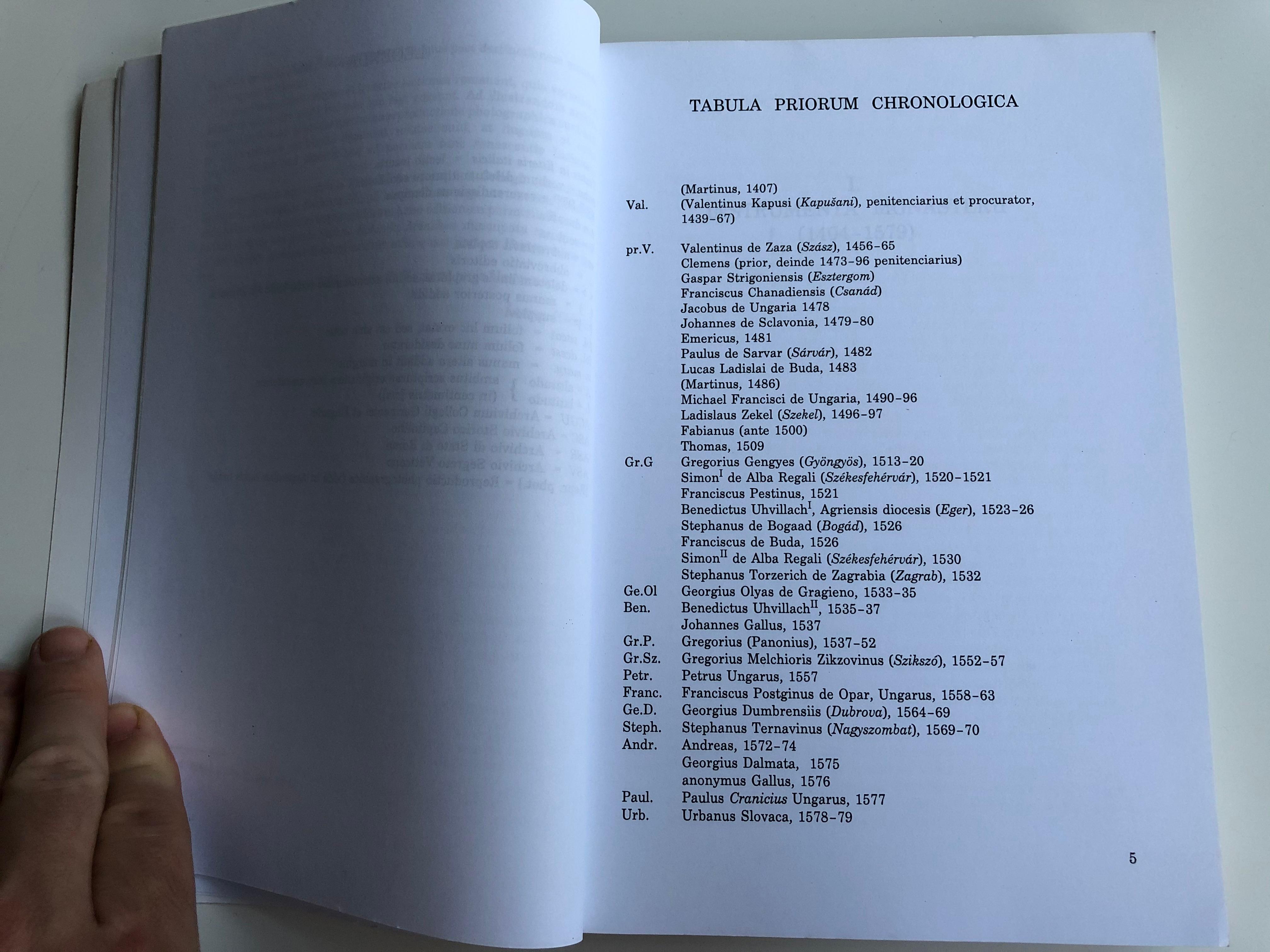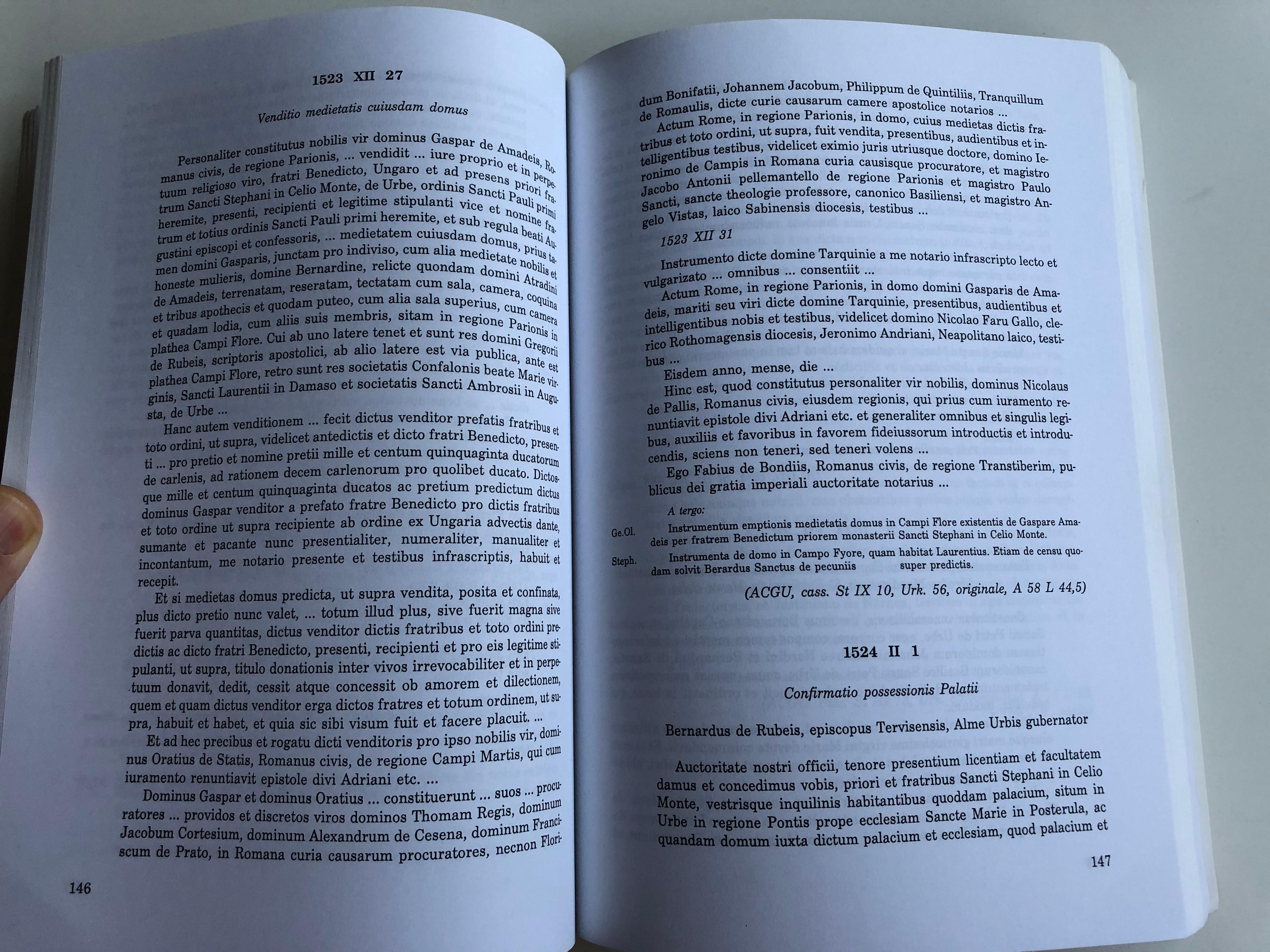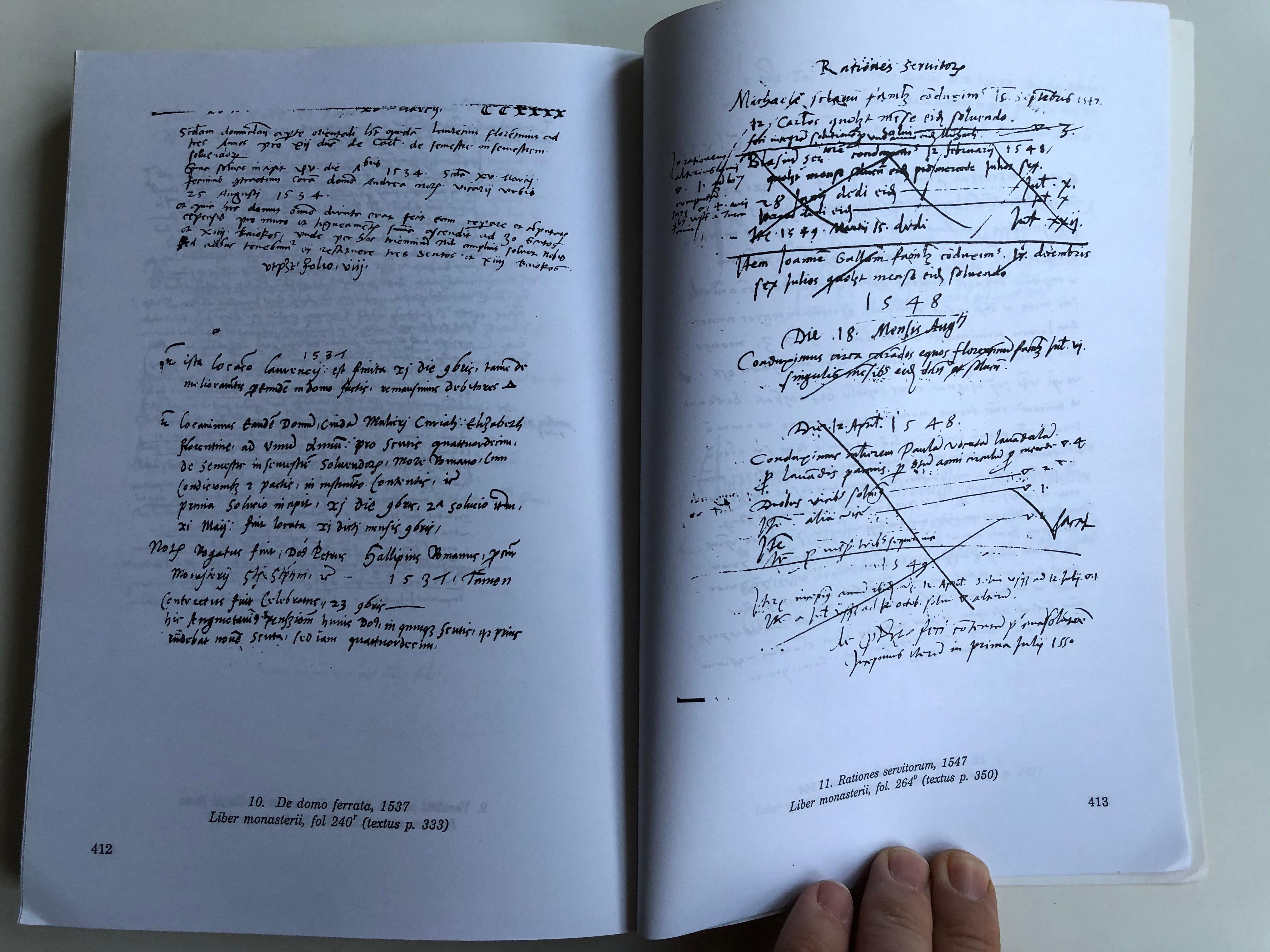Description
Hungarici Monasterii Ordinis Sancti Pauli Primi Heremitae de urbe Roma by Lorenz Weinrich – Latin Edition
ISBN: 9789638472434
Overview
Hungarici Monasterii Ordinis Sancti Pauli Primi Heremitae de urbe Roma by Lorenz Weinrich is an extensive historical work that delves into the history of the Hungarian Pauline Monastery in Rome, specifically focusing on the role of Hungarian Catholic monks in the Roman Order of St. Paul the First Hermit. This book is a key resource for anyone interested in the historical, religious, and cultural significance of the Pauline Fathers, an order founded in Hungary in the 13th century.
In his research, Weinrich examines papal documents and a collection of sources related to the order’s activities, focusing on the economic and political roles the Hungarian Paulines played in the Church administration. The book also sheds light on the order's significant presence in Rome and its influence on the broader European religious landscape.
This Latin edition, published as part of the Bibliotheca Academiae Hungariae in Roma series, offers a comprehensive historical document with a detailed examination of various archival sources. These sources include 40 different archival records that address the role of Kapusi Bálint and other Hungarian monks in the spiritual and practical life of the Santo Stefano Rotondo church, which served as a national church for Hungarians in Rome.
The book’s focus on the Pauline Order provides valuable insights into the monastic life of the time and their unique contributions to the Church.
Product Features
- Format: Paperback
- Pages: 416
- Language: Latin
- Publisher: Magyar Egyháztörténeti Enciklopédia Munkaközösség
- Year of Publication: 1999
- Special Features:
- In-depth exploration of the Hungarian Pauline Order in Rome.
- Comprehensive archival research spanning multiple sources to uncover the history of the monastery.
- Includes papal documents and other crucial historical records related to the order’s influence in the Church.
- Published as part of the prestigious Bibliotheca Academiae Hungariae in Roma series.
Interesting Facts
- The book offers a detailed study of Hungarian Catholic monks in Rome from the Order of St. Paul the First Hermit, who were instrumental in the life of the Santo Stefano Rotondo church.
- The Pauline Order was founded in Hungary in 1250 by Blessed Eusebius of Esztergom, who unified two hermit communities in the Pilis mountains, which later became the core of the order.
- The book emphasizes the historical documents that highlight the role of the Hungarian Paulines in Rome during the 15th and 16th centuries.
- The Pauline Order is known for its distinctive monastic life and was granted numerous privileges by the papacy, including exemptions from episcopal jurisdiction and the right to pursue higher studies in many of its monasteries.
Publishers
- Magyar Egyháztörténeti Enciklopédia Munkaközösség
- Publication Year: 1999
We value your feedback! Share your experience with this product to help others make informed decisions. Your review is important to us!
Hashtags
#HungarianCatholicBooks #PaulineOrder #StPaulsFirstHermit #MonasticHistory #HungarianMonks #SantoStefanoRotondo #ChurchHistory #LatinBooks #BibliothecaAcademiaeHungariae #PapalDocuments #MagyarEgyháztörténet #PaulineFathers #ReligiousHistory #LatinEdition #ChurchAdministration
Hungarian Translation
Áttekintés
Hungarici Monasterii Ordinis Sancti Pauli Primi Heremitae de urbe Roma Lorenz Weinrich történelmi munkája a római Szent Pál első remete rend magyar kolostorainak történelmét vizsgálja, különös figyelmet fordítva a magyar pálosok szerepére Róma vallási és politikai életében. A könyv alapvető forrásmunkaként szolgál mindazok számára, akik érdeklődnek a pálos rend történelmi, vallási és kulturális jelentősége iránt.
Weinrich a különböző pápai dokumentumok és archivált források segítségével tárja fel a magyar pálosok gazdasági és vallási szerepét, amelyet Róma és más európai vallási központokban betöltöttek. A könyv különösen nagy hangsúlyt fektet Kapusi Bálint és rendtársai szerepére a Santo Stefano Rotondo templom életében, amely a magyarok nemzeti templomaként szolgált Rómában.
A kiadvány részletes betekintést nyújt a pálos rend életébe és történetébe, és értékes forrást biztosít a vallástörténeti kutatók számára.
Hashtags
#MagyarKeresztényKönyvek #PálosRend #SzentPálElsőRemete #KözépkoriKönyvek #SzentIstvánTársulat #MagyarMonasztikusTörténet #RómaiKönyvek #PápaiDokumentumok #Egyháztörténet #MagyarEgyháztörténet #PálosSzerzetesek #ReligiózusTörténelem #LatinKönyv #KeresztényMonasztikusÉlet



















































